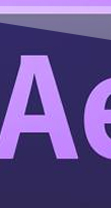Rob Koo's Symbiotic Relationship between Buddhism and Storytelling
Rob Koo chanting "nam myoho renge kyo" to the Gohonzon.
 The mesmerizing chant of a hundred voices in unison could be heard clearly from down the hall of the Soka Gakkai International (sgi) building. It was the repeated mantra of the Lotus Sutra, the mystical words for discovering one’s greatest potential. “Nam Myoho Renge Kyo, Nam Myoho Renge Kyo, Nam Myoho Renge Kyo.” I enter the room with a sense of curiosity, but with the unknown discomfort of disrupting their practice. I take a seat next to Rob Koo, the spiritual wizard with twenty-five years of background knowledge and insight into Buddhist faith. Hands together and facing the Gohonzon—a mandala—I could tell that this was more than just a practice. It was a fundamental livelihood “where you are facing life with your eyes open, and creating action”. The concept was to find your inner Buddha by taking personal responsibility, and not relying on others for results.
The mesmerizing chant of a hundred voices in unison could be heard clearly from down the hall of the Soka Gakkai International (sgi) building. It was the repeated mantra of the Lotus Sutra, the mystical words for discovering one’s greatest potential. “Nam Myoho Renge Kyo, Nam Myoho Renge Kyo, Nam Myoho Renge Kyo.” I enter the room with a sense of curiosity, but with the unknown discomfort of disrupting their practice. I take a seat next to Rob Koo, the spiritual wizard with twenty-five years of background knowledge and insight into Buddhist faith. Hands together and facing the Gohonzon—a mandala—I could tell that this was more than just a practice. It was a fundamental livelihood “where you are facing life with your eyes open, and creating action”. The concept was to find your inner Buddha by taking personal responsibility, and not relying on others for results.
Photo of Rob at DreamWorks in front of Madagascar movie poster.
 This idea plays a key role in Rob’s everyday life as a lead storyboard artist at DreamWorks Animation. There, he faces the pressure of looming deadlines, the rapid demand for production, and the necessity to visualize and develop fresh content. He has been in the “tight niche industry of animation” for sixteen-plus years, and his role in movies like Madagascar and Shrek flow casually in discussion. He attributes a significant portion of his success through his devotion to Buddhism, and participating in its growing community. Rob clarified to me that “at sgi, we are dedicated to reaching and establishing peace through individual happiness. The whole organization exists for members to practice, inspire, and bring courage from our meetings into everyday life” (Koo). His practice is about transforming his beliefs so he can directly improve his ability to tell compelling stories within the community and at DreamWorks. This idea remains a consistent theme during the time I interview him at his work and Buddhist meetings.
This idea plays a key role in Rob’s everyday life as a lead storyboard artist at DreamWorks Animation. There, he faces the pressure of looming deadlines, the rapid demand for production, and the necessity to visualize and develop fresh content. He has been in the “tight niche industry of animation” for sixteen-plus years, and his role in movies like Madagascar and Shrek flow casually in discussion. He attributes a significant portion of his success through his devotion to Buddhism, and participating in its growing community. Rob clarified to me that “at sgi, we are dedicated to reaching and establishing peace through individual happiness. The whole organization exists for members to practice, inspire, and bring courage from our meetings into everyday life” (Koo). His practice is about transforming his beliefs so he can directly improve his ability to tell compelling stories within the community and at DreamWorks. This idea remains a consistent theme during the time I interview him at his work and Buddhist meetings.
Composite photo of Rob in front of the Gohonzon.
 Rob's transformation of his beliefs begins with human revolution, a core Buddhist idea. It is the practice of identifying challenges that inhibit one’s ability to express their humanity and inherent potential for greatness. Growing up, Rob was the type of kid that had a distinct passion for what he was good at. A typical day consisted of scavenging for art materials, and drawing on anything he could get his hands on. In high school his dedication did not waver, and his love for drawing led him towards a successful career in animation. It is a trade industry, and for that reason, Rob left the scattered focus of high school during 12th grade to take his future career seriously at Sheridan College. He was only seventeen, but got a job working on a Saturday morning cartoon series called Ewoks—a George Lucas Production. This event effectively illustrates his natural ability to make direct decisions, and demonstrates that he possesses a significant talent. On the other hand, his hastiness in entering the tough and demanding industry of animation may have set up himself up with personal conflicts down the road.
Rob's transformation of his beliefs begins with human revolution, a core Buddhist idea. It is the practice of identifying challenges that inhibit one’s ability to express their humanity and inherent potential for greatness. Growing up, Rob was the type of kid that had a distinct passion for what he was good at. A typical day consisted of scavenging for art materials, and drawing on anything he could get his hands on. In high school his dedication did not waver, and his love for drawing led him towards a successful career in animation. It is a trade industry, and for that reason, Rob left the scattered focus of high school during 12th grade to take his future career seriously at Sheridan College. He was only seventeen, but got a job working on a Saturday morning cartoon series called Ewoks—a George Lucas Production. This event effectively illustrates his natural ability to make direct decisions, and demonstrates that he possesses a significant talent. On the other hand, his hastiness in entering the tough and demanding industry of animation may have set up himself up with personal conflicts down the road.
Poster image for DreamWorks movie, Ants.
 Later in his mid-twenties as a full-time animator at a feature film studio in Ireland, his conflicts emerged. Due to the exclusion of being away from his family and friends in Canada, and social hardships of everyday life, he experienced severe culture shock. This ultimately drove him into depression with the weight of his future dragging him down. He was a young guy in the industry and the difficulties of life could quickly be distorted and bent around any thought of optimism. During this troubled time, his response was an attempt to find direction and control. He did this through desperate means of fortune-telling and tarot card readings by Peter, one of his coworkers. Rob’s visits were so frequent that, “it got to the point where Peter wrote on a piece of paper the words ‘Nam Myoho Renge Kyo’ and slid it across the desk towards [him] then said, ‘Chant this and leave me alone’ ” (Koo). Rob was excited and curious about these strange words and wondered if they would free him from his problems. That day he began his journey as a Buddhist.
Later in his mid-twenties as a full-time animator at a feature film studio in Ireland, his conflicts emerged. Due to the exclusion of being away from his family and friends in Canada, and social hardships of everyday life, he experienced severe culture shock. This ultimately drove him into depression with the weight of his future dragging him down. He was a young guy in the industry and the difficulties of life could quickly be distorted and bent around any thought of optimism. During this troubled time, his response was an attempt to find direction and control. He did this through desperate means of fortune-telling and tarot card readings by Peter, one of his coworkers. Rob’s visits were so frequent that, “it got to the point where Peter wrote on a piece of paper the words ‘Nam Myoho Renge Kyo’ and slid it across the desk towards [him] then said, ‘Chant this and leave me alone’ ” (Koo). Rob was excited and curious about these strange words and wondered if they would free him from his problems. That day he began his journey as a Buddhist.
A wondrous ability to conquer life did not come smoothly, though. His depression remained stagnant in the sea of his problems, and not until two years later did a solution dawn on him. He realized that he had been “paralyzed into inaction” (Koo) and was dwelling on his past and unknowable future, rather than guiding himself within the present. It was this moment that he experienced human revolution, a transformation of his beliefs, and a transition to a clearer life.
Photo from local Buddhist meeting.
 Today, Rob has triumphed over his problems of the past, and now directs his energy at improving the community and bringing people together. He does this through storytelling on Madagascar and numerous other successful DreamWorks films. Rob had highlight_Papered to me a great example about the necessity of a powerful story over lavish special effects: “most people have experienced going to see an action movie, which had no story, but a lot of amazing effects. At some point though, you can fall asleep, and wonder why am I here watching this? And why did I pay thirteen dollars? In a story there is a human element, where you want to be entertained and feel enriched by it. I feel that it is very important that we have compelling stories.” The emphasis here is the idea of humanity, because it is about relatable life experiences and this is what brings people closer together.
Today, Rob has triumphed over his problems of the past, and now directs his energy at improving the community and bringing people together. He does this through storytelling on Madagascar and numerous other successful DreamWorks films. Rob had highlight_Papered to me a great example about the necessity of a powerful story over lavish special effects: “most people have experienced going to see an action movie, which had no story, but a lot of amazing effects. At some point though, you can fall asleep, and wonder why am I here watching this? And why did I pay thirteen dollars? In a story there is a human element, where you want to be entertained and feel enriched by it. I feel that it is very important that we have compelling stories.” The emphasis here is the idea of humanity, because it is about relatable life experiences and this is what brings people closer together.
Composite photo of one of Rob's comics.
 To discover humanity in a story, it involves distilling it down to its basics. Rob proved to be exceptionally good at this when he described his process of reviewing a movie script. First, “is this a movie about a man trying to find his place in life? Is this a movie about somebody who has lost something and trying to find it? We want to find the underlying principle.” For instance, “Shrek is about somebody who has lost something, and is willing to go through any length to restore it.” This concept of simplifying and idea down to its basics directly relates to Rob’s faith, because Buddhism emphasizes a systematic approach to finding the root cause of a problem, and then taking action to overcome it. At typical Buddhist meetings, members share their life stories and detail out how their practice has helped them reach their goals. Through numerous years in the community, Rob’ exposure to real life stories has presented him with a stronger understanding of human emotion, and how characters, like Shrek or Alex the Lion from DreamWorks movies, deal with challenges. Having the ability to understand the fundamentals of a story is a crucial component of being an animator. It is what companies look for, it is a difficult job “to initially qualify for, and it isn’t for the faint of heart”(Koo). I believe that it is the convergence of Rob's passion and Buddhist beliefs that have driven him where he is today.
To discover humanity in a story, it involves distilling it down to its basics. Rob proved to be exceptionally good at this when he described his process of reviewing a movie script. First, “is this a movie about a man trying to find his place in life? Is this a movie about somebody who has lost something and trying to find it? We want to find the underlying principle.” For instance, “Shrek is about somebody who has lost something, and is willing to go through any length to restore it.” This concept of simplifying and idea down to its basics directly relates to Rob’s faith, because Buddhism emphasizes a systematic approach to finding the root cause of a problem, and then taking action to overcome it. At typical Buddhist meetings, members share their life stories and detail out how their practice has helped them reach their goals. Through numerous years in the community, Rob’ exposure to real life stories has presented him with a stronger understanding of human emotion, and how characters, like Shrek or Alex the Lion from DreamWorks movies, deal with challenges. Having the ability to understand the fundamentals of a story is a crucial component of being an animator. It is what companies look for, it is a difficult job “to initially qualify for, and it isn’t for the faint of heart”(Koo). I believe that it is the convergence of Rob's passion and Buddhist beliefs that have driven him where he is today.
One of the rare mango trees in Rob's office.
 I had the chance to look inside Rob’s office at DreamWorks, and observe the environment where his creative powers are expressed. Opening the door of his office, I am stuck by a sudden contrast, from the preceding dim lit hallway to his room pouring with light from a multitude of windows. At first glance, you would think you were walking through a tropical garden with his dozen rare mango trees lining the perimeter of his serene-like work area. It was a bizarre sight to see so much plant life, entangled among the computer hardware and his personal 22HD Cintiq Wacom® tablet. The astonishing nature of his workspace had thrown me off, but for Rob, his mango trees and tablet had become a standard necessity to create a comfortable working environment.
I had the chance to look inside Rob’s office at DreamWorks, and observe the environment where his creative powers are expressed. Opening the door of his office, I am stuck by a sudden contrast, from the preceding dim lit hallway to his room pouring with light from a multitude of windows. At first glance, you would think you were walking through a tropical garden with his dozen rare mango trees lining the perimeter of his serene-like work area. It was a bizarre sight to see so much plant life, entangled among the computer hardware and his personal 22HD Cintiq Wacom® tablet. The astonishing nature of his workspace had thrown me off, but for Rob, his mango trees and tablet had become a standard necessity to create a comfortable working environment.
Inside of Rob's office next to his mango trees.
 His determination to bring together his ability to draw cartoons and Buddhism was where he found the inspiration to create a comic series called "Great Buddhist Stories" to express Buddhist morals and beliefs through creative dialogue and visuals. Creating these comics has been a voluntary activity show to support in the community and have his work published in Living Buddhism magazine. On page 14 and 15 of the 2011 edition he illustrated the honorable story of a cobbler that realizes the importance of embracing one’s own life rather than comparing it to others. Stories like these emphasize experiences that readers can relate to. This done through Rob’s beautifully drawn characters and insightful dialogue. In the last decade, Buddhism has been on the rise in America and “an American Religious Identity Survey (aris) estimate puts the total in 2004 at 1.5 million” (Lampman) Buddhist followers within the United States. The efforts from people like Rob are what expand the Buddhist community and keep the movement moving forward.
His determination to bring together his ability to draw cartoons and Buddhism was where he found the inspiration to create a comic series called "Great Buddhist Stories" to express Buddhist morals and beliefs through creative dialogue and visuals. Creating these comics has been a voluntary activity show to support in the community and have his work published in Living Buddhism magazine. On page 14 and 15 of the 2011 edition he illustrated the honorable story of a cobbler that realizes the importance of embracing one’s own life rather than comparing it to others. Stories like these emphasize experiences that readers can relate to. This done through Rob’s beautifully drawn characters and insightful dialogue. In the last decade, Buddhism has been on the rise in America and “an American Religious Identity Survey (aris) estimate puts the total in 2004 at 1.5 million” (Lampman) Buddhist followers within the United States. The efforts from people like Rob are what expand the Buddhist community and keep the movement moving forward.
Penguin character from Madagascar movies.
 Rob’s life is truly an inspiration. He has proven that from a young age he has had a significant level of dedication for what he believes in, and a natural talent when he entered the animation industry straight out of high school. At DreamWorks, he has continued to express these qualities as a storyboard artist, by telling compelling and relatable stories. What makes Rob so good at this is because he has become accustomed to hearing numerous life experiences at Buddhist meetings, and understands how to distill these experiences down into story plots. Over his career he has told countless stories, but I believe the most significant one is his own. His life demonstrates the perfect example of somebody who has encountered a difficult time, but found a way to overcome it with valiant action and contributions to the community. He reveals that the key to his success in overcoming challenges was the simple combination of Buddhism, and the ability to adapt, because “change is the one thing defined in our universe, so you can either be drowning in it, or be swimming in it and enjoying it. Buddhahood is learning to live in a world of cause and effect” (Koo).
Rob’s life is truly an inspiration. He has proven that from a young age he has had a significant level of dedication for what he believes in, and a natural talent when he entered the animation industry straight out of high school. At DreamWorks, he has continued to express these qualities as a storyboard artist, by telling compelling and relatable stories. What makes Rob so good at this is because he has become accustomed to hearing numerous life experiences at Buddhist meetings, and understands how to distill these experiences down into story plots. Over his career he has told countless stories, but I believe the most significant one is his own. His life demonstrates the perfect example of somebody who has encountered a difficult time, but found a way to overcome it with valiant action and contributions to the community. He reveals that the key to his success in overcoming challenges was the simple combination of Buddhism, and the ability to adapt, because “change is the one thing defined in our universe, so you can either be drowning in it, or be swimming in it and enjoying it. Buddhahood is learning to live in a world of cause and effect” (Koo).
Rob Koo's Symbiotic Relationship between Buddhism and Storytelling essay was the first component produced during the profile documentary process. Its contents derive from personal and email interviews with Rob, and video recordings of other SGI Buddhist community members. Different components of the interviews and essay were then used to design the profile article, photo slideshow, and media feature. Of all the projects on this site, the essay was the most challenging to create, because I focused heavily on properly depicting Rob and his contributions to the community.








